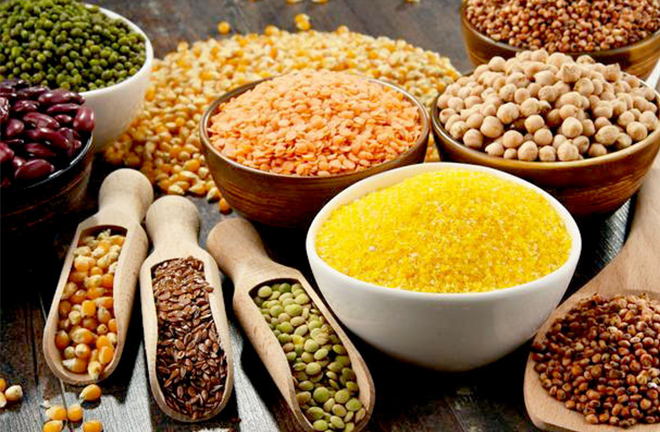Chinese food security should adjust to new goals

Food security has become the paramount issue that concerns people's livelihoods. Photo: FILE
Food security is the material basis and fundamental guarantee for economic and social development as well as national security. Since the 18th National Congress of the Communist Party of China (CPC), the Central Committee has placed a high premium on food production and security. As China is now facilitating the new development pattern of "dual circulation," which smooths domestic circulation and lets domestic and international circulation reinforce each other, food security can be strengthened from two dimensions: ensuring sufficient domestic food supply and seeking diversified food imports.
China has a strong domestic consumption market with strong consumption potential. Speeding up improvements in the domestic market circulation with food production and consumption as the key should be prioritized in the new development pattern. In order to ensure steady domestic food production and supply, the following goals are noteworthy.
The first goal is to stabilize planting acreage and optimize planting structures. In the process of industrialization, urbanization, and rural vitalization, each local region in China should coordinate the relationship between the protection of permanent basic farmland and the overall planning of land use. Strict controls should be placed on converting basic farmland to non-agricultural land to stabilize the food planting acreage, and protect all the 1.8 billion mu (a unit of area, 1 mu is about 0.0667 hectares) of farmland nationwide. On this basis, we should adjust and optimize the food planting structure, focus on the production of food crops with supply shortages (such as soybeans) and high-quality green crops (such as high-gluten wheat).
The second goal is to improve agricultural infrastructure construction and enhance the ecological function of farmland. Most of China's agricultural infrastructure was built in the late 20th century or the beginning of the 21st century. For many years, the construction and maintenance of local water conservancy facilities has been supported by financing from the central government through water transfer payments. In line with rural poverty alleviation and development strategies, infrastructure in rural areas has significantly improved. However, agricultural production conditions in some poor areas still fail to meet the new era's needs. It is still necessary to further improve the construction of agricultural infrastructure such as field roads, drainage and irrigation systems, shelterbelts and so on, by taking the strategy of rural vitalization as an opportunity for improvement.
The third goal is to ensure the stability of food prices and ensure farmers' food planting incomes. In the past 40 years since the reform and opening up, food prices increased at a rate less than 1/10 of that of urban residents' average income. The consistently low food price has become an important factor restricting the income of rural residents. Reasonable and stable food prices are a fundamental factor that protects the interests of agriculture and farmers, and also serve as an effective means to arouse the enthusiasm of farmers and stabilize food production and supply. Therefore, the government can determine reasonable food prices and the minimum purchase price according to invested factors such as manpower, agricultural materials (agricultural machinery, pesticides, seeds, chemical fertilizer, plastic membranes for agricultural use) and insure against the possibility of disaster-related loss to guarantee that farmers can increase their income.
Food security in China is basically guaranteed, and for many years the production of rice has exceeded its demand. China's Agricultural Industry’s 2020 Development Report shows that China's three staple crops—rice, wheat and corn—reached a self-sufficiency rate of 98.75% in 2019. However, structural problems in the national food supply are still prominent. A gap still exists between corn production and demand; high-gluten wheat faces a supply shortage; 80% of soybean consumption needs to be imported, and the volume of imported soybean in 2019 reached more than 95 million tons, accounting for 86% of its total consumption. Under the premise of constructing the new "dual circulation" development pattern, exploring a more diversified food supply pattern and easing structural supply problems is another effective means to ensure China's food security.
In addition, it is crucial to strengthen regional cooperation and boost Chinese agricultural enterprises, encouraging them to "go global." State-owned transnational agricultural enterprises should be encouraged to participate in agricultural production and trade cooperation among governments and enterprises of countries along the "Belt and Road" route. With regard to agricultural products which have shortages and are urgently needed, food supply chains should be established. At the same time, for crops and agricultural products where China has a strong production capacity, exports can be gradually realized after ensuring sufficient domestic supply.
Though food security in China has been basically met, the focus on strengthening food security as the baseline of people’s livelihoods should not be lost. In face of complex situations and challenges, it is of great significance to make full use of the dual markets of domestic and international supply. A food security system that features "sufficient domestic supply with moderate imports" means much for maintaining social stability, ensuring national security, and stabilizing the international food market.
Chu Chengshan is from the Tianjin Academy of Social Sciences.
Edited by BAI LE
